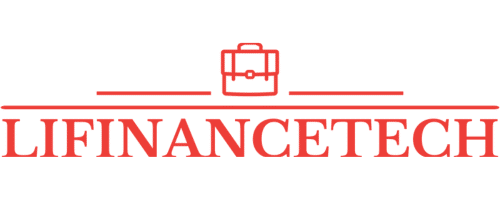
Are you a struggling small business owner, constantly facing cash flow problems? Unsure of how to effectively manage your finances? You’re not alone. Poor cash flow management is a common reason for business failure.
In this article, we explore the importance of cash flow management and how it can be the key to your business’s survival. We discuss common cash flow problems, financing options, and strategies for solving cash flow issues.
Gain valuable insights and practical solutions to navigate your cash flow woes and ensure long-term viability.
Key Takeaways
- Poor cash flow management is a common reason for business failure
- Cash flow problems occur when a business spends more than it earns
- Regular cash flow analysis and forecasting can help identify and prevent problems
- Debt financing or equity financing can provide additional cash injections during business expansion
Importance of Cash Flow Management
Managing cash flow is vital for your business’s survival. Cash flow management techniques are essential in ensuring the financial stability and growth of your business.
Different industries face unique cash flow challenges, and it’s crucial to understand and address these challenges to maintain a healthy cash flow. For example, in industries such as real estate development, significant initial investments and ongoing cash outflows can lead to cash flow problems. Rapidly expanding businesses also encounter cash flow issues due to increased costs and the need to maintain higher levels of inventory.
To overcome these challenges, regular cash flow analysis and forecasting are necessary. Additionally, shortening the cash flow conversion period can improve cash flow management.
Common Cash Flow Problems in Business
To effectively navigate the challenges of cash flow management, it’s important to address common cash flow problems that businesses encounter. Here are three common cash flow challenges that businesses face, along with potential solutions:
1. Seasonal Fluctuations: Navigating Peaks and Valleys
Challenge:
Seasonal demand often results in cash flow fluctuations, creating financial strain during slower periods. This challenge is particularly prominent in industries such as retail, tourism, and agriculture, where demand varies significantly across different seasons. Consider a ski equipment retailer; during the winter months, sales soar as customers gear up for the skiing season. However, come summer, demand dwindles, and the business faces reduced cash inflow.
Solution:
- Discount Strategies: Implement targeted discounts during off-peak seasons to stimulate sales. For instance, the ski equipment retailer can offer end-of-season clearance sales, encouraging customers to purchase winter gear at discounted rates during the summer months.
- Diversification: Broaden your product or service offerings to appeal to a wider customer base. The retailer might expand its product line to include outdoor gear suitable for summer activities, reducing the impact of seasonal variations.
- Reserve Fund: Establishing a reserve fund during peak seasons ensures a financial cushion for covering expenses during slower periods. The retailer can set aside a portion of the profits earned during winter for use during the off-season, helping to mitigate the impact of reduced cash flow.
How to manage financial risk- Read Here
2. Late Payments: Tackling Timely Transactions
Challenge:
Late payments from customers pose a significant threat to cash flow stability. This challenge is prevalent across various industries, impacting businesses of all sizes, from freelancers to large corporations. Consider a graphic design studio that delivers a project to a client but faces delays in receiving payment. The delayed cash inflow affects the studio’s ability to cover ongoing operational expenses.
Solution:
- Clear Payment Terms: Clearly define payment terms and policies to set expectations. The graphic design studio may specify a 15-day payment window on all invoices, clearly communicating the timeline within which clients are expected to settle their bills.
- Incentives for Early Payment: Offer discounts or incentives for customers who settle invoices promptly. The studio can provide a 5% discount for clients who make payments within the first ten days, encouraging timely settlements.
- Automated Invoicing: Implementing automated invoicing and payment systems streamlines the process, reducing delays. The studio can utilize software that sends automated reminders for overdue payments, minimizing the administrative burden and increasing the chances of prompt payments.
3. High Overhead Costs: Trimming Excess Financial Fat
Challenge:
Excessive overhead costs can strain cash flow, hindering the ability to cover essential expenses. This challenge is prevalent in various industries, with businesses often grappling with fixed costs that remain high regardless of revenue fluctuations. Consider a manufacturing company with high operational costs, including rent, utilities, and salaries. During periods of reduced production or economic downturns, covering these fixed expenses becomes challenging.
Solution:
- Expense Evaluation: Conduct a comprehensive evaluation of expenses to identify areas for cost-cutting without compromising operations. The manufacturing company can explore energy-efficient solutions and optimize production processes to reduce utility and labor costs without compromising product quality.
- Negotiate Supplier Terms: Negotiate favorable terms with suppliers to decrease the immediate financial burden. The manufacturing company may negotiate bulk purchase discounts, extending payment terms, or exploring vendor financing options to alleviate the strain on working capital.
- Outsourcing Efficiency: Consider outsourcing non-core functions to reduce overhead. A tech startup might outsource IT support to specialized service providers, reducing the need for in-house staff and associated overhead costs.
Cash Flow Analysis and Forecasting
When analyzing and forecasting cash flow, a meticulous examination of both inflows and outflows in your business finances is crucial. Effective cash flow forecasting techniques and management strategies provide valuable insights into your business’s financial health, facilitating informed decisions for its survival and growth.
A comprehensive cash flow analysis allows for the identification of potential gaps or imbalances between cash inflows and outflows, enabling proactive measures to address them. Moreover, forecasting future cash flows helps anticipate upcoming shortages or surpluses, allowing adjustments to business operations. To enhance your cash flow analysis and forecasting, consider delving into the following details:
| Cash Inflows | Cash Outflows |
|---|---|
| Sales revenue | Operating expenses |
| Loan proceeds | Inventory purchases |
| Accounts receivable collections | Equipment purchases |
| Capital injections | Payroll expenses |
| Investment income | Loan repayments |
Now, let’s understand the significance of each component in brief:
Sales Revenue:
Monitoring sales revenue is crucial—it reflects the core income generated by the business. Understanding the factors influencing sales, such as seasonality or marketing initiatives, aids in predicting cash inflows. For instance, a retail business can analyze historical data to anticipate sales peaks during holiday seasons, enabling effective cash flow management.
Loan Proceeds:
Loans often play a vital role in business expansion. Evaluating the terms and impact on cash flow ensures that borrowed capital aligns with the business’s financial capacity. For example, a startup securing a loan for product development must consider the repayment schedule to synchronize outflows with projected revenue streams.
Accounts Receivable Collections:
Timely collection of accounts receivable is crucial for maintaining liquidity. Efficient invoicing and follow-up processes impact the speed at which payments are received. Implementing automated invoicing systems can accelerate payment collection, ensuring a steady cash inflow for a service-oriented business.
Capital Injections:
Infusions of capital from investors or partners provide financial stability. Strategic planning of these injections helps navigate periods of increased expenditures or capitalize on growth opportunities. A tech startup, for instance, may secure funding rounds strategically, injecting capital before planned expansions or major product launches.
Investment Income:
Monitoring returns on investments contributes additional income. Understanding the role of investments in generating cash inflows aids in strategic financial decision-making. A company with a diversified investment portfolio tracks the performance of these assets, leveraging gains to bolster operational cash flow.
Operating Expenses:
Operating expenses encompass various costs like rent, utilities, and salaries. A detailed analysis of these outflows helps identify areas for cost-cutting or efficiency improvements. An analysis of operational costs may reveal opportunities to implement energy-efficient solutions, reducing utility expenses without compromising functionality.
Inventory and Equipment Purchases:
For businesses involved in manufacturing, managing inventory levels is crucial. Effective inventory turnover ensures that cash is not unnecessarily tied up, impacting overall liquidity. A manufacturing company may optimize production schedules and supplier relationships to minimize excess inventory, enhancing cash flow efficiency.
How VAs can help you make your business recession-proof- Read Here
Payroll Expenses:
Employee salaries and benefits constitute a significant portion of cash outflows. Efficient payroll management involves strategic planning to ensure salary payments align with the business’s cash flow. A company may implement flexible work arrangements during periods of lower cash flow to manage payroll expenses
Loan Repayments:
Understanding the repayment schedule for loans is crucial to avoid financial strain. Timely repayment ensures a positive credit history, facilitating future borrowing at favorable terms. A business consistently making timely loan repayments enhances its creditworthiness, allowing it to negotiate better terms for future financing needs.
In the realm of cash flow, businesses with accurate forecasts are 20% more likely to navigate challenging economic times successfully. According to a study by the Federal Reserve Bank of Chicago, a staggering 82% of business failures can be attributed to poor cash flow management. These statistics highlight the critical role of thorough cash flow analysis and forecasting in ensuring the financial resilience and sustainability of a business.
Software Accounting Programs for Cash Flow Analysis
Utilize software accounting programs to streamline your cash flow analysis and gain valuable insights into your business’s financial health. These programs offer innovative solutions that can revolutionize the way you manage your cash flow.
Here are three key benefits of using software accounting programs for cash flow analysis:
1. Automated Tracking:
One of the standout benefits of utilizing software accounting programs is the automated tracking they bring to your cash flow management. Picture this: every sale, every expense, all automatically recorded and categorized. For instance, if you run an e-commerce business, the software can seamlessly integrate with your payment gateways, tracking real-time transactions and updating your financial records.
Studies indicate that businesses using automated tracking through accounting software experience a 30% reduction in manual errors, contributing to more accurate financial data (Source: American Institute of CPAs).
2. Real-time Reporting:
The power of real-time reporting offered by software accounting programs cannot be overstated. Imagine being able to monitor your cash flow position at any given moment. For example, a restaurant owner can instantly access a dashboard that reflects current sales, pending invoices, and upcoming expenses. This real-time insight enables timely decision-making and a proactive approach to financial management.
According to a survey by Sage Intacct, businesses with real-time reporting capabilities are 40% more likely to make strategic decisions that positively impact their financial health.
3. Forecasting Capabilities:
Forecasting the future is a key advantage of software accounting programs. These tools leverage historical data and current trends to project your future cash flow. Consider a small consultancy firm; the software can analyze past project cycles, client payment behaviors, and industry trends to forecast potential income. This foresight allows businesses to anticipate and navigate potential cash flow challenges effectively.
A report by Gartner states that companies leveraging forecasting capabilities in accounting software have a 15% higher accuracy in predicting cash flow fluctuations, providing a valuable edge in financial planning.
Incorporating software accounting programs into your financial toolkit isn’t just about efficiency; it’s about gaining a strategic advantage in managing your cash flow.
Debt Financing Vs. Equity Financing
Now let’s delve into the comparison between debt financing and equity financing to understand their implications for your business’s cash flow.
Debt Financing
Debt financing involves raising capital by borrowing money, typically through loans or bonds, with the promise of repayment plus interest. This method allows businesses to secure funds without relinquishing ownership but comes with the obligation to repay the borrowed amount.
Benefits:
(a) Control Retention:
Debt financing allows businesses to secure funds without diluting ownership. This is particularly advantageous for family-owned enterprises that prioritize retaining control over decision-making. For instance, a family-owned bakery seeking expansion can secure a business loan, preserving familial influence.
(b) Tax-Deductible Interest:
Interest payments on debt financing are often tax-deductible, providing a financial advantage. Consider a tech startup that secures a loan for research and development. The interest paid on the loan can potentially reduce taxable income, offering a valuable tax benefit.
Drawbacks:
(a) High Interest Payments:
While interest payments can be advantageous, accumulating too much debt may result in substantial interest payments. This can strain a business’s cash flow, especially during economic downturns. For example, a manufacturing company facing reduced demand for its products may struggle with high debt-related interest payments.
(b) Restrictive Repayment Terms:
Lenders often impose strict repayment terms, limiting a business’s financial flexibility. This becomes challenging, particularly for businesses with fluctuating revenues. A retail business, for instance, might find it hard to meet rigid repayment schedules during seasonal slumps, impacting cash flow adaptability.
Equity Financing
Equity financing involves raising capital by selling shares of the business to investors. While it provides a cash injection for expansion, it also results in the dilution of ownership and the sharing of profits with shareholders.
Benefits:
(a) Cash Injection for Expansion:
Equity financing offers a substantial cash infusion for businesses looking to expand rapidly. This can be a game-changer, particularly for startups. For instance, a tech company securing equity investment experiences an infusion of capital, accelerating product development and market expansion.
Drawbacks:
(a) Dilution of Ownership:
The main drawback of equity financing is the dilution of ownership. Bringing in external investors means sharing a portion of the company. A real-world example is a biotech startup securing venture capital. While this influx fuels growth, it comes at the cost of reducing the ownership stake of the founders.
(b) Sharing Profits:
Equity financing involves sharing profits with investors. As a business becomes more profitable, a percentage of those profits goes to shareholders. Consider a renewable energy startup that, over time, needs to allocate a portion of its earnings to equity investors as part of the profit-sharing agreement.
What is Accounting and what are its essentials for a new business- Read Here
Consideration and Decision-Making
It’s imperative to carefully consider the pros and cons of both financing options to make an informed decision aligned with your business’s cash flow needs. To illustrate, let’s look at a comparison table summarizing the key points:
| Criteria | Debt Financing | Equity Financing |
|---|---|---|
| Control Over Business | Full control retained by the business owner | Dilution of ownership with the entry of external investors |
| Tax Implications | Interest payments often tax-deductible | No tax benefits related to equity financing |
| Cash Injection | Limited by the amount borrowed | Potential for a significant cash infusion for expansion |
| Risk of Strained Cash Flow | High if too much debt is taken on | Shared risk with investors, but no direct debt-related strain |
| Flexibility | Repayment terms can be restrictive | Provides flexibility as there are no fixed repayment terms |
It will be interesting to know that according to a report by the National Small Business Association, as of 2021, 72% of small businesses used some form of debt financing, while 22% utilized equity financing. This reflects the diverse preferences and needs of businesses in managing their cash flow and growth strategies.
Strategies for Solving Cash Flow Problems
One strategy to solve cash flow problems is to regularly analyze your cash flow and take proactive measures to manage it effectively. By implementing strategies for cash flow improvement and utilizing cash flow optimization techniques, you can ensure the financial stability and growth of your business.
Here is a table outlining some effective strategies for solving cash flow problems:
| Strategy | Description |
|---|---|
| Invoice Factoring | Sell your unpaid invoices to a third-party company for immediate cash, improving your cash flow |
| Expense Reduction | Identify and cut unnecessary expenses to free up cash and improve your overall cash flow position |
| Negotiate Payment Terms with Suppliers | Work with your suppliers to negotiate extended payment terms, giving you more time to pay your bills |
Effectively managing cash flow involves proactive analysis and the implementation of strategies to ensure financial stability and growth.
1. Invoice Factoring
This involves selling unpaid invoices to a third-party company, providing immediate cash to enhance liquidity. For instance, a small manufacturing business facing a cash flow crunch can leverage invoice factoring to receive quick funds, injecting life into its operations. According to a report by the International Factoring Association, this approach is widely adopted globally, with the industry experiencing consistent growth.
2. Expense Reduction
By identifying and cutting unnecessary expenses, businesses can free up cash and improve their overall cash flow position. For example, an e-commerce startup could scrutinize operational costs, optimizing advertising budgets, and renegotiating service contracts to allocate more resources to essential operations. Research by the National Small Business Association indicates that 45% of small businesses actively implement expense reduction strategies to address cash flow issues.
3. Negotiating Payment Terms with Suppliers
By working with suppliers to negotiate extended payment terms, businesses gain more time to settle bills, improving cash flow management. Consider a retail business negotiating extended payment terms with suppliers to align with its cash flow cycle, allowing more flexibility in managing expenses. According to research by Dun & Bradstreet, 61% of businesses find negotiating payment terms with suppliers to be an effective strategy for managing cash flow.
Implementing these strategies not only tackles immediate cash flow challenges but also establishes a foundation for sustained financial health. Regularly revisiting and adapting these approaches ensures ongoing cash flow optimization and contributes to the long-term success of your business.
Regular Cash Flow Analyses
To effectively manage your cash flow and ensure the financial health of your business, it’s essential that you regularly analyze your cash flow. Regular cash flow analyses provide valuable insights into your business’s financial performance and help you make informed decisions.
Here are three important reasons why you should prioritize regular cash flow analysis:
- Accurate Cash Flow Projections: By analyzing your cash flow statement, you can project future cash inflows and outflows. This allows you to anticipate potential cash shortages or surpluses, enabling you to make necessary adjustments in advance.
- Identify Cash Flow Trends: Regular cash flow statement analysis helps you identify trends in your business’s cash flow over time. This allows you to identify patterns and understand the factors influencing your cash flow, enabling you to take proactive measures to optimize your cash flow management.
- Prevent Cash Flow Problems: By regularly analyzing your cash flow, you can identify potential cash flow problems before they become critical. This gives you the opportunity to implement strategies to improve your cash flow, such as renegotiating payment terms with suppliers or adjusting your pricing structure.
Monitoring Customer Credit History and Business Indicators
Monitor your customers’ credit history and business indicators to ensure effective cash flow management.
Customer credit analysis allows you to assess the creditworthiness of your customers and identify potential risks of late or non-payment. By monitoring their credit history, you can make informed decisions about extending credit or implementing stricter payment terms.
Additionally, monitoring business indicators such as sales trends, industry performance, and market conditions can provide valuable insights into the financial health of your customers and their ability to pay on time.
This proactive approach helps you identify potential cash flow issues before they become significant problems and allows you to take appropriate actions to mitigate risks.
Considerations for Cash Flow Enhancement
By incorporating regular cash flow analyses and monitoring customer credit history and business indicators, you can enhance your cash flow management strategy and ensure the long-term success of your business.
To optimize your cash flow, consider the following strategies:
1. Streamline Your Invoicing Process:
To expedite payments and enhance cash flow, implementing an efficient invoicing system is crucial. Leveraging technology to automate the invoicing process can streamline the generation and delivery of invoices. Additionally, automated reminders for outstanding payments can encourage timely settlements. Offering convenient payment options, such as online payments or digital wallets, can further expedite the cash collection process.
For instance, suppose a service-oriented business adopts an automated invoicing system that sends invoices promptly after services are rendered. By utilizing technology, they significantly reduce the time it takes to receive payments.
You would be surprised that according to a survey by QuickBooks, businesses that automate their invoicing process experience a 15% reduction in average payment times.
2. Negotiate Favorable Payment Terms:
Collaborating closely with suppliers to negotiate extended payment terms aligning with your cash flow needs can significantly impact your financial flexibility. This approach provides additional time to collect payments from your customers before settling your own financial obligations. Research by Atradius reveals that 41% of businesses consider extended payment terms from suppliers as a key strategy for improving cash flow.
Suppose a manufacturing company engages in dialogue with suppliers to extend payment terms from 30 to 45 days, better aligning with their cash flow cycle. This negotiation allows them to manage cash inflows and outflows more effectively.
3. Manage Your Inventory Effectively:
Maintaining an optimal inventory level is critical for cash flow management. Balancing the need to meet customer demand with avoiding excess stock that ties up capital is essential. Utilizing inventory management systems to track and forecast demand accurately enables businesses to strike this balance effectively. For example, a retail business employs advanced inventory management software to track sales trends and adjust stock levels accordingly. This data-driven approach prevents overstocking and minimizes tied-up capital.
The National Retail Federation reports that businesses using advanced inventory management systems experience a 20% reduction in excess inventory and associated holding costs.
Incorporating these strategies not only enhances short-term cash flow but also contributes to the overall financial resilience and sustainability of your business.
Conclusion
In conclusion, effective cash flow management is essential for the survival and success of any business.
By analyzing and forecasting cash flow, utilizing software accounting programs, and considering debt and equity financing options, small business owners can overcome common cash flow problems. Regular cash flow analyses, monitoring customer credit history, and implementing strategies for cash flow enhancement are crucial for maintaining a healthy financial position.
By implementing these strategies, businesses can navigate cash flow woes and ensure the long-term viability of their operations.












2 Comments
Your comment is awaiting moderation.
It feels like you’ve read my mind! You seem to know so much about this topic, as if you wrote the book on it. Adding some visuals could make it even more engaging. Excellent read—I’ll definitely be back!
Your comment is awaiting moderation.
Your blog is a shining example of excellence in content creation. I’m continually impressed by the depth of your knowledge and the clarity of your writing. Thank you for all that you do.
Your comment is awaiting moderation.
Your blog is a constant source of inspiration for me. Your passion for your subject matter is palpable, and it’s clear that you pour your heart and soul into every post. Keep up the incredible work!
I thoroughly enjoyed the work that you have accomplished here. The sketch is elegant and your written material is stylish as well. However, you may develop a sense of apprehension regarding the delivery of the following; however, you will undoubtedly revisit since the situation is virtually identical if you safeguard this hike.
Thanks for your kind words and concerns. Can you tell the kind of apprehensions your are actually talking about? It would be much appreciated. You can also mail me if you like to.